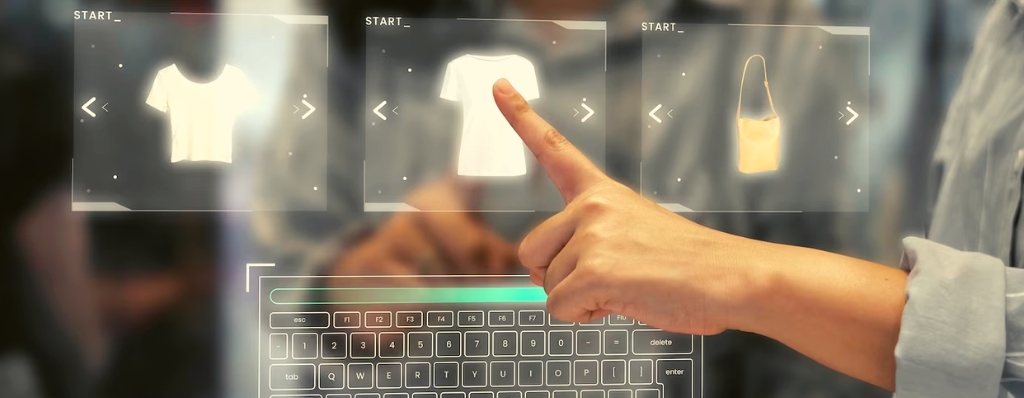
Essential to satisfy and retain customers, customer relationship are at the centre of any company’s marketing strategy.
Today, brands can further enhance consumer satisfaction through improved user experience through omnichannel customer relationships.
But what is omnichannel selling relationship? 🤔
The answers are in this article:
- Omnichannel selling : definition
- What are the different channels of an omnichannel customer service?
- How do we define the omnichannel customer?
- What is omnichannel selling?
- How has omnichannel transformed the customer relationship?
- What are the 4 ways to implement an omnichannel strategy?
Omnichannel selling : definition
If omnichannel selling is considered today as a differentiator or a competitive advantage, it will become a customer requirement tomorrow.
What is the definition of omnichannel selling?
Omnichannel selling is defined by the customer’s access to all online and offline channels of exchange interconnected as points of contact with the brand.
It is in fact a strategy that consists of establishing a certain consistency across all your channels or points of contact, ensuring the quality of the relationship in the client journey whatever the channel of exchange and developing loyalty.

What are the different channels of an omnichannel customer service?
In the digital age, you now have a multitude of channels to exploit for omnichannel customer service:
- The website which is usually the first point of contact
- The telephone or click-to-call on a website
- Points of sale: brick-and-mortar shops, contact centres, trade fairs and physical events
- E-mail, which is widely used for after-sales service, order tracking or special offers
- Instant messaging: live chat, SMS, What’s app, etc.
- Social media with millions of users (Twitter, Pinterest…)
Finally, let’s not forget mobile applications for mobile users, which represent a large part of the market, regardless of the sector of activity 🤳
▷ Read futher on social media with Why Shoud Your Brand Actively Develop Customer Relationship on Social Media
How do we define the omnichannel customer?
Unlike a consumer who comes to the shop, passes through the aisle and pays for their purchase at the checkout, a so-called omnichannel customer is defined as a customer who has gone through various channels to get in touch with the company.
More concretely, for example, a young consumer may discover your brand on Instagram and then send an email to obtain a catalogue 📖
They will then place their order on the website or via an app and finally collect the package from a point of sale.
▷ Explore our training dedicated to Omnichannel selling included in our catalogue Customer Relationship

What is omnichannel selling?
At each stage of the buying process, the customer uses a different channel but their action continues.
As the channels work together, it becomes possible to ensure continuity of interactions 🤩
This is known as an omnichannel selling process.
No matter which touchpoint is called upon to access services, the exchanges will need to build on previous interactions.
In this way, you can ensure a harmonised customer experience and offer tailored support to each consumer.
This is the challenge of implementing an omnichannel customer relationship!
How has omnichannel transformed the customer relationship?
Often confused, the terms “multichannel sales” and “omnichannel sales” differ in several ways.
A multi-channel customer relationship is defined as a customer service that operates via several channels: telephone, email, application, without any link between the channels.
Clearly, any company using more than 2 channels is considered multichannel.
On the other hand, an omnichannel customer relationship is distinguished by a perfectly orchestrated service and channels connected to each other 🔁
It then becomes possible to offer a personalised customer experience for each user, taking into account their preferences and previous purchases.
To effectively track the omnichannel customer relationship, some brands establish a record in a CRM listing all the information about a customer and their history: their orders, complaints or previous queries.
In this case, operators can respond quickly to requests since they have all the necessary information.
▷ To learn more, we recommend our training Master the key merchandising concepts
What are the 4 ways to implement an omnichannel strategy?
To develop and master the omnichannel customer relationship, you need to work on four things.
1. Mapping the customer journey

In order to conduct an omnichannel selling strategy, one of the first actions to consider would be to establish a clear and accurate representation of the purchase path followed by the customer 🛒
Indeed, before you can offer a coherent omnichannel customer relationship, you need to have a good understanding of the different channels and customer journeys.
Allowing you to trace the customer’s interaction with the brand, this mapping starts at the first point of contact with the consumer and then highlights the steps taken by the customer during their purchase journey.
Ideally, the mapping should be carried out with all the marketing, customer service and sales teams in order to obtain an accurate representation of the process.
Mapping is also essential to identify :
- Friction or poorly managed contact points that generate dissatisfaction
- Normal contact points that generate good traffic and acceptable satisfaction
- Opportunities or touch points to be exploited to create gateways to other channels
2. Define marketing automation scenarios
Once the objectives have been determined, you can imagine the marketing actions to be implemented to achieve them.
This is what we call marketing automation scenarios 😌
By the way, you should know that marketing automation is essential to guarantee the consistency of a customer relationship during an omnichannel sale.
Unlike a marketing campaign that is started in a one-off manner, this scenario will be repetitive and mechanical ⚙️
Examples are the welcome email sent to every new member of the site or a greeting card for every anniversary of registration.
In addition to the scenarios, the triggering event and message sequences should also be carefully considered to ensure consistency in customer interaction

3. Collect the necessary customer data
Indispensable, marketing automation scenarios are powered by customer and product data.
To encourage users to take the next steps, you will need to collect a certain amount of data about your customers, in compliance with the rules in force in the country such as RGPD in France 💡
These include previous purchases over several months, the reason for the last call or the products purchased.
With this information, you can develop a global view of the targets, but also find the necessary data to set up the scenarios and program their frequency.
4. Review customer feedback
There is nothing like customer feedback to assess their satisfaction. In fact, it is often a rich source of information.
An omnichannel customer relationship must also offer a solution through which consumers can express themselves.
These opinions can be used to understand customer expectations in order to serve them better 🧲
On all channels such as websites, social networks or mobile applications, it would be ideal to increase the space for collecting customer feedback.
This will help you identify gaps between your service and consumer expectations.
* * * * * * * *
If it is one of the trends to follow, this new way of approaching customer relations raises some challenges.
Indeed, the objective is to succeed in making the different channels communicate, avoiding isolating them from each other and eliminating repetition.
This journey must be seamless across all channels: both online and offline.
* * * * * * * *
If you are considering organising training on omnichannel customer relations and follow-up, contact us now!










